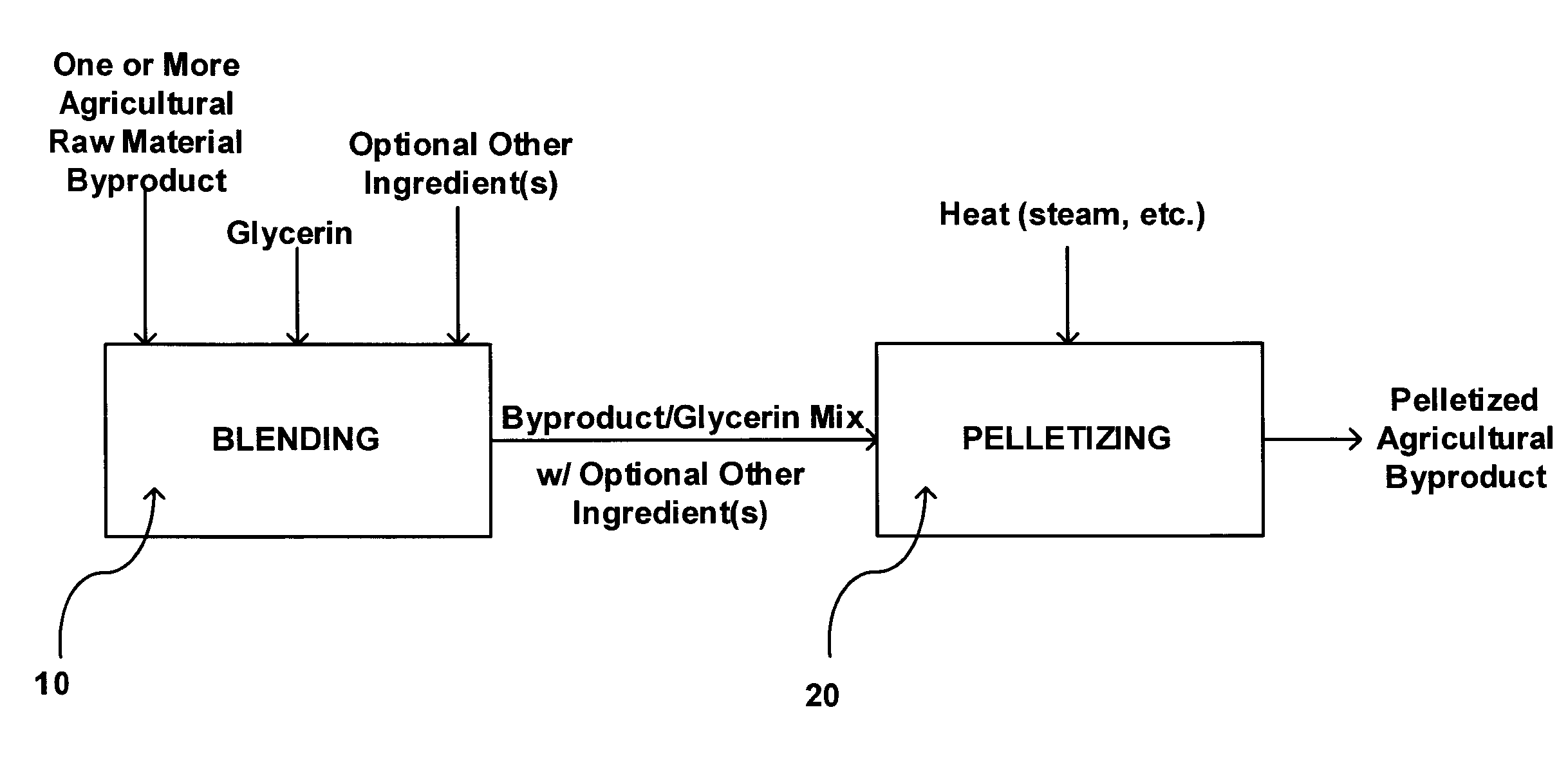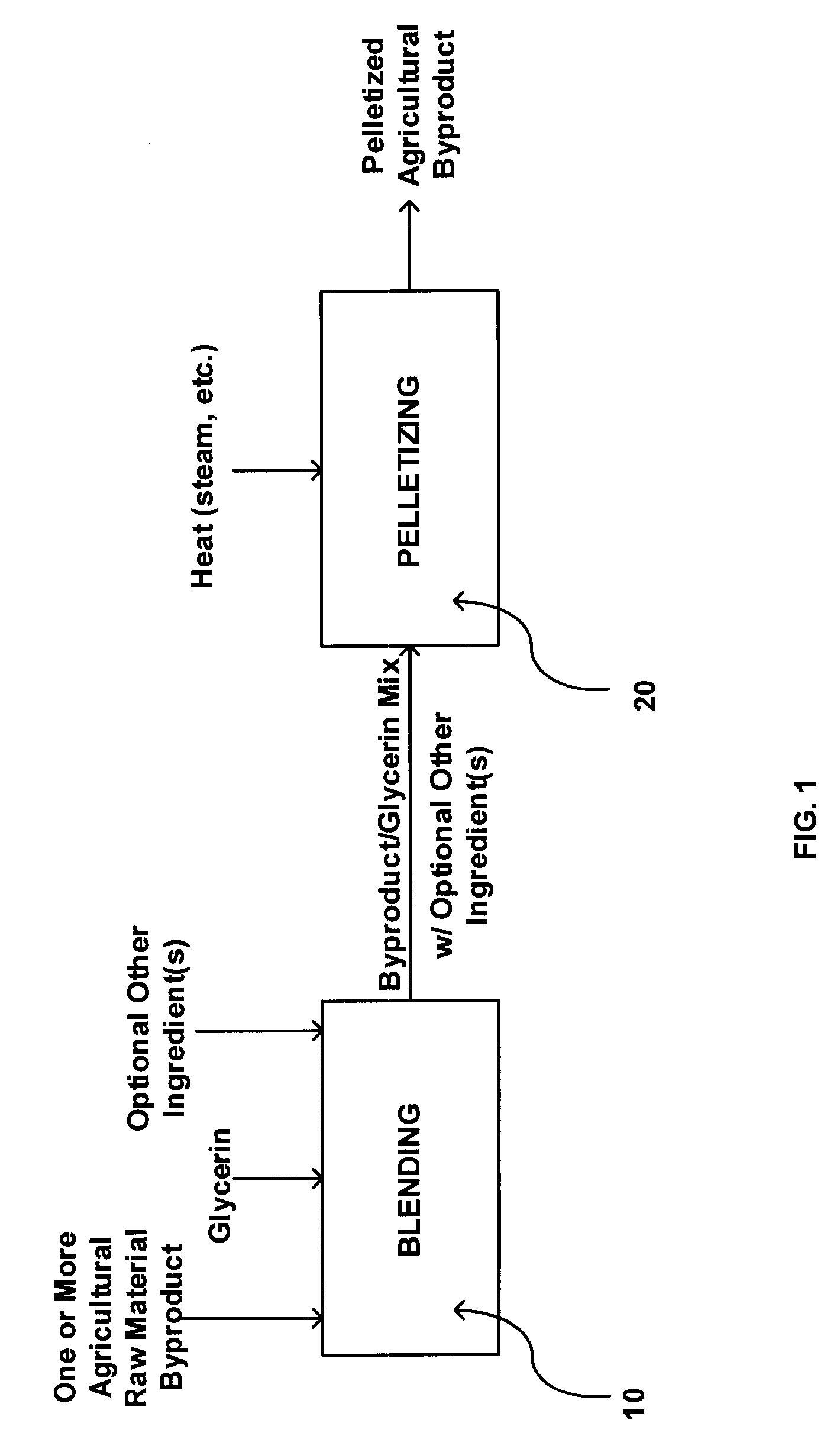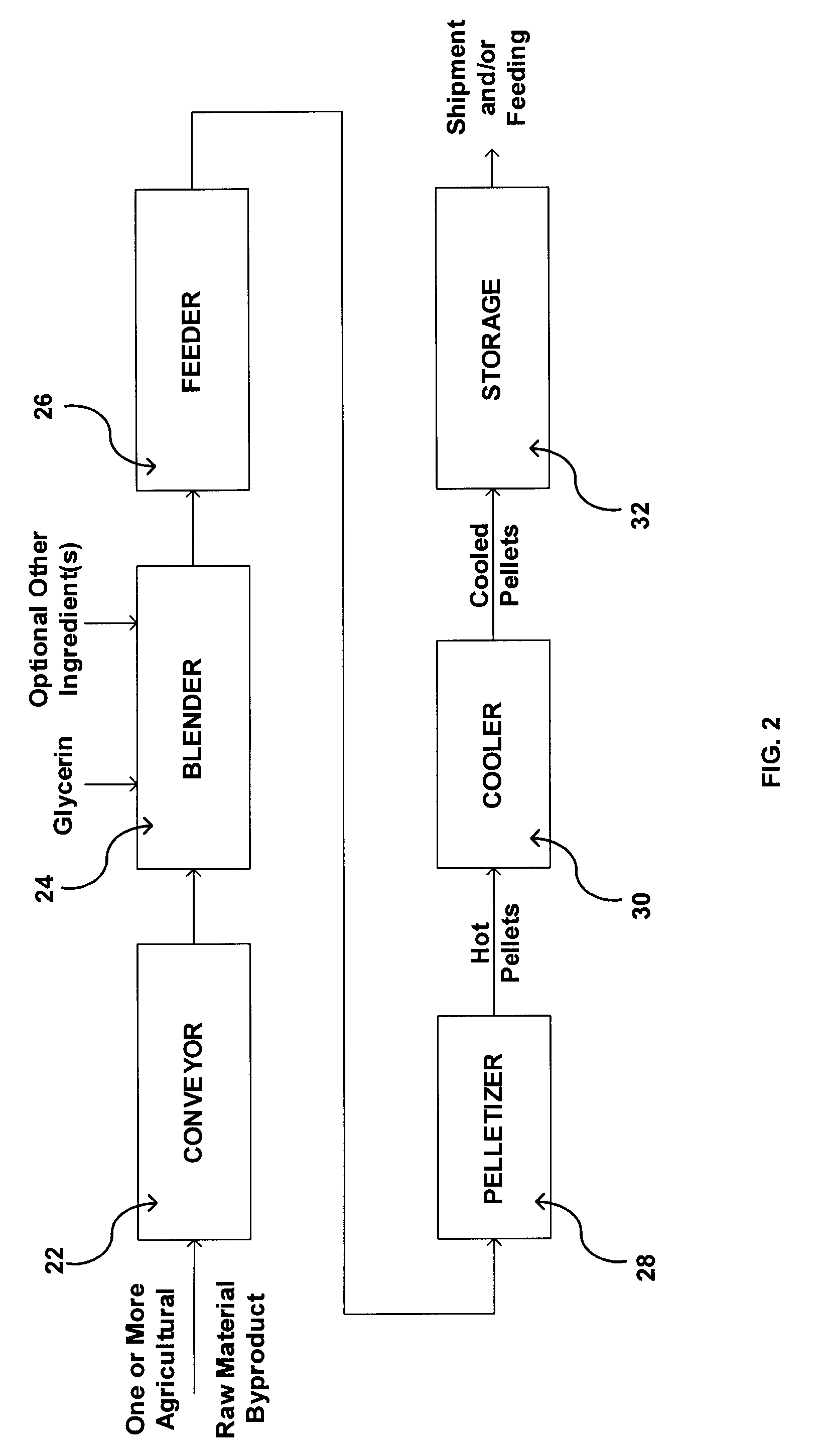High density, energy component-added pelletized agricultural processing byproducts for animal feed
a technology of energy component and animal feed, which is applied in the field of animal feed products, can solve the problems of affecting the quality of animal feed pellets, the energy content of animal feed byproducts varies over a wide range, and the use of such agricultural raw material byproducts as animal feed also has some associated problems, so as to improve the feed quality of products, increase the energy content of pelletized byproducts, and improve the effect of feed quality
- Summary
- Abstract
- Description
- Claims
- Application Information
AI Technical Summary
Benefits of technology
Problems solved by technology
Method used
Image
Examples
example 1
[0083]A batch of 10 parts by weight of dried distiller's grain with solubles (DDGS), a well known agricultural raw material byproduct, containing 10.7% of moisture by weight is blended in a horizontal ribbon blender with 1 part by weight of glycerin containing 14.5% of moisture by weight. The ratio on a dry basis is 8.9 parts of DDGS by weight to 0.86 parts of moisture-free glycerin by weight. The temperature of the blended product may range from about 60° F. to about 90° F. (about 15° C. to about 32° C.). The blended product is subsequently fed to a pellet mill (in one embodiment a California Pellet Mill, Master model with 40 HP motor). This pellet mill is operated at a compression ratio of about 8:1. The die opening is about 5 / 32″ (about 4 mm). The exit temperature of the pellets is about 148° F. (about 64° C.). The moisture content of the pellets is 9.7% by weight after drying and cooling. The durability of the pellets is 98.7%. After cooling the bulk density of the pellets is ab...
example 2
[0084]A batch of 10 parts by weight of a mixture of oilseed byproducts, including soybean hulls, cottonseed hulls, soybean meal, cottonseed meal and sunflower seed meal, containing about 10% of moisture by weight is blended in a horizontal ribbon blender with 1 part by weight of glycerin containing about 14% of moisture by weight. The ratio on a dry basis is 9 parts of dry oilseed byproducts by weight to 0.86 parts of moisture-free glycerin by weight. The temperature of the blended product generally ranges from about 60° F. to about 90° F. (about 15° C. to about 32° C.). The blended product is subsequently fed to a pellet mill (same as used in Example 1 above). The die opening is 5 / 32″ and the mill is operated at a compression ratio of 11.5:1. The exit temperature of the pellets is 133° F. (about 56° C.). The moisture content of the pellets is about 9.5% by weight after drying and cooling. The durability of the pellets is 95%. After cooling the bulk density of the pellets is 35 lb / f...
example 3
[0085]A batch of 10 parts by weight of agricultural raw material byproducts, including corn gluten meal, whole cottonseed, cottonseed meal, soybean meal and hulls, containing about 15% moisture by weight is blended in a horizontal ribbon blender with 1.3 parts by weight of glycerin containing about 10% moisture by weight. The ratio on a dry basis is 8.5 parts by weight of the byproducts and 1 part by weight of moisture-free glycerin. The temperature of the blended product ranges from about 60° F. to about 90° F. (about 15° C. to about 32° C.). The blended product is subsequently fed to a pellet mill (same as in Examples 1 and 2 above). The die opening is 5 / 32″ and the mill is operated at a compression ratio of 11.5:1. The exit temperature of the pellets is 120° F. (about 49° C.). Moisture content of the pellets is about 12% by weight after drying and cooling. The durability of the pellets is 98%. After cooling the bulk density of the pellets is 33 lb / ft3 (about 529 kg / m3). The energ...
PUM
 Login to View More
Login to View More Abstract
Description
Claims
Application Information
 Login to View More
Login to View More - R&D
- Intellectual Property
- Life Sciences
- Materials
- Tech Scout
- Unparalleled Data Quality
- Higher Quality Content
- 60% Fewer Hallucinations
Browse by: Latest US Patents, China's latest patents, Technical Efficacy Thesaurus, Application Domain, Technology Topic, Popular Technical Reports.
© 2025 PatSnap. All rights reserved.Legal|Privacy policy|Modern Slavery Act Transparency Statement|Sitemap|About US| Contact US: help@patsnap.com



